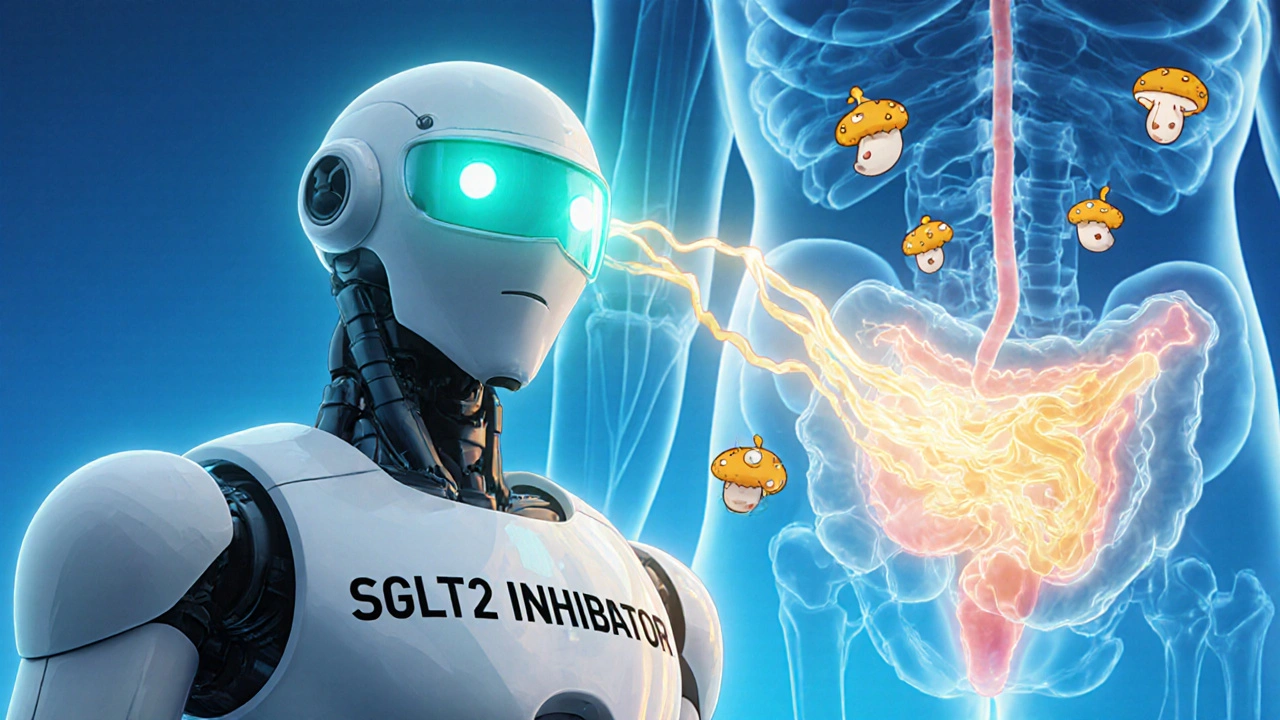
How to Prevent SGLT2 Inhibitor Genital Infections: Hygiene, Hydration, and Timing
Learn how to stop SGLT2 inhibitor genital infections with simple hygiene steps, proper hydration, and timing tricks, plus when to seek medical help.
When you take an SGLT2 inhibitor, a class of diabetes medications that help the kidneys remove excess sugar through urine. Also known as gliflozins, these drugs include dapagliflozin, empagliflozin, and canagliflozin — all designed to lower blood sugar by making your body flush out glucose. But this same mechanism can lead to an unexpected problem: genital infections, fungal or bacterial infections in the genital area caused by sugar-rich urine.
Why does this happen? SGLT2 inhibitors increase sugar in your urine. That sugar doesn’t just disappear — it becomes food for yeast and bacteria, especially in warm, moist areas. The most common result is a fungal infection, often caused by Candida albicans, leading to itching, redness, and discomfort. Men might notice swelling or pain around the penis; women may experience vaginal itching, discharge, or burning during urination. These aren’t rare — studies show up to 1 in 10 people on these drugs get one. It’s not a sign you’re doing something wrong. It’s a known side effect, and it’s manageable.
What’s more, these infections don’t always mean you need to stop your medication. Most respond well to over-the-counter antifungal creams or a short course of oral antifungals. Keeping the area clean and dry, avoiding tight clothing, and drinking enough water helps. But if you’re getting recurring infections, talk to your doctor. You might need a different diabetes treatment, or your doctor might suggest switching to a drug that doesn’t carry this risk. These infections are also more likely if you’re uncircumcised, have a history of yeast infections, or have high blood sugar overall. That’s why monitoring your glucose levels matters — better control means less sugar in your urine, and fewer infections.
You’ll find real stories here from people who’ve dealt with this side effect, along with clear advice on how to prevent it, when to see a doctor, and how to balance diabetes control with comfort. Some posts show how others handled it without stopping their meds. Others break down the difference between a simple yeast infection and something more serious. There’s also info on how these infections compare to other side effects of diabetes drugs — because knowing what’s normal helps you know what’s not.

Learn how to stop SGLT2 inhibitor genital infections with simple hygiene steps, proper hydration, and timing tricks, plus when to seek medical help.